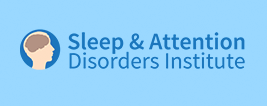Attention Deficit and Sleep Disorders
Attention Deficit and Sleep Disorders
Attention Deficit can be a primary brain disorder, which starts early in childhood (before age 12) and persists through life. It can also be caused or worsened by other disorders. Sleep disorders and mood disorders may particularly cause or worsen attention deficit.
When we evaluate and treat attention deficit (including ADHD), we want to do the following:
1. Determine whether some symptoms began in early childhood, before age 12. If it began later, it probably does not have a primary element. It is probably secondary to something else.
2. Decide how severe it is. If it is mild and does not significantly affect functioning, it probably does not need further evaluation or treatment.
3. Decide if there are other factors possibly contributing to the attention deficit. We want to focus particularly on sleep disorders and mood disorders. Sleep apnea can cause or worsen attention deficit because the brain does not get enough oxygen. Excessive sleepiness can also cause or worsen attention deficit. If there are symptoms suggesting sleep apnea or excessive sleepiness, then sleep testing is essential. Sleep apnea or excessive sleepiness must be treated in order to produce the best control of attention deficit. Mood disorders also contribute to attention deficit, although attention deficit can cause or worsen mood disorders. If there are symptoms suggesting mood disorders, we advise evaluation and treatment.
4. Decide if there may be primary attention deficit. We use an FDA approved EEG tool to guide us regarding whether there may be primary attention deficit. Even if there is primary attention deficit, we still need to make sure there are no other disorders that may cause or worsen attention deficit.
5. Decide what medicine is likely to work best. We use an EEG based cognitive evoked potential tool to do so.
6. Use validated rating scales to assess baseline severity and change in severity of attention deficit with treatment.
7. Aim to normalize attention, by treating any sleep disorder (if present) contributing to attention deficit, and using medicines as necessary for attention deficit , so others can no longer tell the patient has attention deficit.
8. Using a variety of medicines, stimulant and non-stimulant, both label and off-label, to achieve the best results with the least side effects. We try to stay away from amphetamines, which release dopamine and are potentially highly addicting, with more side effects. However, we do use amphetamines when necessary.
Most patients with attention deficit do not have a sleep disorder or a mood disorder contributing to their attention deficit. Patients who do have a sleep disorder or mood disorder along with attention deficit, do need evaluation and treatment for these disorders. We sometimes run into patients who are snoring loudly and probably have sleep apnea, but decline to get their sleep disorder evaluated and treated. We also sometimes run into patients who are excessively sleepy, even to the point of sleepiness while driving, yet they decline to get their sleep disorder evaluated and treated. Then there are the patients who are significantly depressed but do not wish to get their depression treated. We do tell these patients that we cannot successfully treat their attention deficit unless their sleep disorder or mood disorder is also treated. We evaluate and treat sleep disorders, and refer elsewhere for treatment of mood disorders.
We get much better outcomes than generally considered good enough
We have published data in peer reviewed scientific journals showing that, as a result of our science-based methods, we can get much better outcomes than generally considered good enough. Pharmaceutical companies and the FDA generally consider a 25% decrease in validated attention rating scales as a successful outcome. We achieve a much better 50-60% decreased in validated attention rating scales. This normalizes attention, and others can no longer tell that the patient has attention deficit.










